Backyard Birding 127… 128… 129… and Counting
Birdwatchers like me are notoriously nerdy, and the essence of this is a fascination with lists.
The northern mockingbird I spotted in our garden this past spring was very special. Not only are mockingbirds uncommon around here, but this bird was also the 129th and most recent species we have recorded on our property. We’ve been keeping a list of all the bird species we’ve seen at our place since we moved here in the spring of 1992.
On our 23-acre domain just south of Erin, we’re fortunate to have several distinct habitats – hardwood bush, old meadow, a pond and a horticulturally diverse but not well-maintained yard and garden around the house – so our place is attractive to a variety of species. We also feed birds in winter, and this has drawn some unexpected visitors. People are often surprised to hear that so many different kinds of birds have visited our place, but the variety shows what can be seen when you’re attuned to such things.
Birdwatchers like me are notoriously nerdy, and the essence of this is a fascination with lists. I’m not so organized that I keep a life list, but I really enjoy keeping our yard list. One simple rule governs whether a species makes it onto our list: identification must be certain. No “I think it was …” or “I’m almost sure it was …” Equivocation is not allowed; if it’s on our list, we saw it. But in a concession to the small size of our place, we’ve decided, completely arbitrarily, that airspace counts. So if a bird flies over our place, it’s eligible to go on the list. This somewhat permissive approach has allowed species like the common loon, tundra swan and common merganser to be included in our tally. Here are the species we’ve seen, grouped by theme.
The Usuals
This group includes mourning doves, chickadees, grackles, robins and red-winged blackbird. A little boring, true, but very reliable, and some in this gang are the first birds back in the spring, so they’re always a welcome sight.
The Beautiful Usuals
Included in this group are rose-breasted grosbeaks, regular springtime visitors to our feeders; Baltimore orioles, the striking black-and-orange members of the blackbird family; and indigo buntings, so blue they make bluebirds jealous. I also include blue jays, cardinals and goldfinches in this category, even though their good looks may be underappreciated because they’re so common.
Family with the Most Observed Species
Warblers have been called the butterflies of the bird world because they are brightly coloured and flit around. And because they’re small and never seem to sit still, many people are not even aware of these exquisite birds in our midst. We’ve seen 22 species of warblers at our place. Several, such as the yellow warbler, the common yellowthroat and the American redstart, stay through the summer. But we see the most in the spring, when beauties such as the black-throated green warbler, the parula, the Blackburnian and the magnolia pass through on their way from their winter residence in the tropics to their breeding grounds in the northern forests.
Little Brown Jobs
“Little brown jobs,” or LBJs, is what birders sometimes call the small, drab-coloured birds they’ve spotted but haven’t identified while skulking through the underbrush. Most LBJs are sparrows. We’ve identified nine species of sparrow at our place, including the usually urban-dwelling house sparrow, the song sparrow, the white-crowned sparrow, the tree sparrow and the white-throated sparrow with its iconic “O Canada Canada Canada” song that is familiar to anyone who has spent summertime in cottage country.
Birds with Declining Populations
Since we first spotted a common nighthawk at our place in the early 1990s, the Canadian population of this nocturnal bird has plunged by more than 70 per cent. The number of chimney swifts is also declining, so much so that both nighthawks and chimney swifts are now classified as threatened species. Populations of barn swallows, olive-sided flycatchers and eastern wood pewees are also declining.
All these birds belong to the same “guild,” a group of species which are ecologically similar but not necessarily related in other ways. Members of this particular guild are aerial insectivores, birds that catch insects in flight. Though scientists are uncertain about the reasons for the striking decline, studies seem to suggest different causes for different species. But the fact that all feed entirely on insects they catch while flying strongly suggests changes in insect populations are having tremendous repercussions on this guild.
Birds of Prey
A certain amount of semantic and taxonomic confusion exists over identifying birds of prey. Does this group include only eagles and hawks? What about owls and vultures? Ignoring that muddle, we’ve seen 13 species we believe fall under the broadest definition, including two types of owls – great horned and screech – and a variety of hawks. Everyone is familiar with the red-tailed hawk, by far the most common around here, but we’ve also seen Cooper’s hawks and sharp-shinned hawks trying to prey on the birds that frequent our feeder. Visitors from the North, such as the goshawk and rough-legged hawk, have also dropped in. We’ve even witnessed an osprey diving for the very small fish that live in our very small pond. Not sure what he was thinking.
Woodpeckers
Our list includes six species. The common downy and hairy woodpeckers are frequent visitors to our feeders. Less common are the red-bellied woodpecker, which first appeared just a couple of years ago, and the marvellously named yellow-bellied sapsucker. Our favourite is the huge, at least by comparison, pileated woodpecker with its prehistoric appearance, including a magnificent red plume atop its head.
Mimics
Some species mimic the songs of others. Male birds probably imitate other species to impress females, and a larger repertoire may indicate a more experienced and therefore more savvy individual. In ascending order of talent, I’d rate the three species we’ve seen as the catbird, the brown thrasher and the mockingbird. An interesting variation on this theme is the black-billed cuckoo, which we see only occasionally. Females sometimes lay their eggs in the nests of other birds and have the uncanny ability to produce eggs that mimic the appearance of the eggs of the species whose nest they are borrowing.
The Unexpected
Our most unexpected visitor would be the bald eagle we saw, just once, flying over our property. Good thing airspace counts. But we’ve also had other pleasant surprises, such as a merlin, the smaller cousin of the much more famous peregrine falcon, and sandhill cranes, which first appeared about five years ago and now show up once or twice every spring.
What’s Next?
I figure if we live here long enough, we might be able to boost our count to 150 species. A good candidate for a new species is the vesper sparrow, which prefers fields interspersed with shrubs and trees, exactly the habitat provided in our back 40. I can’t figure out why I haven’t seen one yet. We should also be able to spot horned larks. I’ve frequently seen them on roadsides and in ploughed fields, so surely one could fly overhead or land on our driveway.
For 20 years I’ve also been watching for crossbills, birds of the Far North that make winter journeys south in years when northern seed crops are poor. None has yet visited our feeder, but they were reported in the area this past winter, so I’m on high alert.
My Favourites
I’m a bit fickle, so my favourite seems to change with the season, but lately I’ve been enamoured of fox sparrows. These birds are large – for sparrows – and surprisingly richly coloured – again, for sparrows – with spotted breasts, reminiscent of thrushes. They scratch around in the fallen leaves in our garden and by our feeders hunting for seeds in a manner that makes them seem somewhat desperate and therefore endearing. They show up mostly in the spring as they migrate to Ontario’s Far North, but I’ve sometimes gone several years between sightings, which contributes to the prodigal-son appeal of these birds.
We are now adding species to our list at a rate of only about one or two a year, as all the “easy” ones have long since been tallied. Although my kids – not to mention my wife and friends and sometimes even I, myself – will undoubtedly continue to think I’m a bit odd, I’ll continue to tend my list, as any obsessive birdwatcher would.
Chris Wedeles is a biologist who lives in Erin. As this story went to press, he sent this news flash: “We recorded species number 130 just a couple of weeks ago – a pine warbler – also an uncommon treat!”
Some Tips for Fostering Diversity
Habitat diversity is key to maintaining the diversity of bird species. Most species have an affinity for specific plant communities or groups of communities. Here are some things you can do to nurture diverse habitats that attract a variety of species.
Meadows and pastures
are best for grassland species, such as the meadowlark and bobolink. Sadly, these two species have recently been classified as threatened by the Committee on the Status of Species at Risk in Ontario. Since 1966, when continent-wide surveys began, populations of these species have declined by up to 75 per cent.
Both meadowlarks and bobolinks nest on the ground, making their eggs and young highly vulnerable to human farming practices. If you own meadows, keep them as meadows if you can. If you are a hay farmer, consider delaying the first harvest as late as you can. The usual timing of the first haying often coincides with the time young birds are in the nest but unable to fly – and this makes hayfields a deadly trap.
Old fields
are often scrubby places made up of a mixture of grasses, shrubs such as hawthorn and juniper, and scattered trees. These features provide a rich habitat for birds, and fields like these are my favourite place for birdwatching. They offer good perches for birds and unimpeded views for me. If you own an abandoned farm field, consider letting at least some of it undergo a slow succession. Your reward will be a host of bird species.
Mature forests
have much to offer birds. Diversity in plant species is important, but so is vertical diversity. Offering vegetation on the forest floor and in the mid-storey and canopy enhances this diversity. Birdwatching in forests can be frustrating, though, because there are so many refuges that birds can be hard to spot. If you go birdwatching in a mature forest, brush up on your birdsongs so you can identify species by sound as well as by sight.
Young plantations
are great for taking advantage of the provincial government’s Managed Forest Tax Incentive Program, but in truth, they are not that great for birds. To get the most out of them birdwise, plant a variety of trees and plant in patches rather than rows, leaving open spaces scattered throughout.
Ponds
can be a magnet for birds. If you aren’t obsessed with neatness, let the edges of your pond go natural. The shrubs, cattails and other plants that will grow there provide great bird habitats.
Backyard Birding around your house
is a great place to get started. Many sources provide information on specific plants that attract birds and butterflies to your gardens. But the most basic thing to do is put up a bird feeder. One day this past autumn, I counted 16 different species at our feeder. A few things to remember:
- Black oil sunflower seeds are preferred by more species than any other seeds.
- Avoid mixes containing millet, which will be ignored by many species.
- Locate the feeder close to a window. A metre away is best. Not only will this provide an excellent view of the birds, but it will also help save lives. Studies have shown that feeders placed close to houses cause fewer deaths, because birds that fly into the window when startled at the feeder are not going fast enough to harm themselves.
- If you have an outdoor cat, please do not put up a bird feeder. In Canada every year, pet cats are responsible for killing tens of millions, perhaps even hundreds of millions, of birds.
Every Bird Has a Story
Each bird species has unique characteristics. Some have a striking appearance, others have evolved very peculiar survival mechanisms, others still are struggling to adapt, in spite of impressive “design” features, in a world increasingly modified by humans. Here are short accounts of four species that I find particularly fascinating among the visitors to our property.
Yellow Warbler
Catch a fleeting glimpse of a little yellow bird in dense vegetation around a pond, and you can be almost certain it’s a yellow warbler. These birds are by far the most common warblers in the Headwaters region and, aside from goldfinches, they are the most strikingly yellow birds to be seen. I like yellow warblers because they stick around all summer, are relatively common and are a great example of the underappreciated jewels in our midst. Point one out to someone with an untapped interest in birds and the usual response is, “Wow, I had no idea.”
Something about the nests of yellow warblers makes them one of the preferred targets of cowbirds, who engage in the unappealing behaviour of laying their eggs in the nests of other species. Yellow warblers are not without defences, however. If they find foreign eggs in their nest, they frequently build a new nest on top of their old one.
The song of the yellow warbler, frequently described as “sweet sweet sweet, I’m so sweet,” is not only a good way of recognizing this bird, but also an apt description of its appeal to birdwatchers.
Fox Sparrow
Fox sparrows are a geneticist’s dream – or nightmare. At last count, 18 subspecies, divided into four groups, had been identified. The morphological differences in plumage colour, bill shape, and wing and tail length are features used to discriminate between subspecies and may indicate that the fox sparrow is a species in evolutionary transition, adapting to changes in habitat and food availability throughout its range. In Ontario fox sparrows reach their highest densities in the Hudson Bay Lowlands during the summer. In the Headwaters region they can be spotted for a short time every spring and fall as they migrate from or to more temperate overwintering grounds, primarily in the eastern and southeastern United States.
Learn more, read Don Scallen’s story on Spring Sparrows.
Pileated Woodpecker
The laughing call of the pileated woodpecker is loud, resonant and sure to grab the attention of anyone in the woods. Hearing its almost eerie, haunted tone is affirmation that there is at least a bit of wild in the area you are trekking through.
Though its call is striking, the appearance of the pileated woodpecker is even more extraordinary. Huge for a woodpecker, this bird is often compared in size to a crow, and it has a ridiculous red plume on its head. It cannot possibly be mistaken for any other bird.
Ecologically, the pileated woodpecker is considered a “keystone species” because its importance is far greater than its numbers suggest. As a pileated woodpecker hunts for its favourite food, carpenter ants, it excavates large cavities in the trunks of dead and dying trees. These cavities provide nesting places for a wide variety of species, from chickadees to wood ducks to flying squirrels.
Northern Mockingbird
Northern mockingbirds are found throughout the continental United States, but their habitat is restricted to the most southerly parts of Canada. In Ontario they have a strong toehold on the Niagara Peninsula and in the Toronto area, south of the Oak Ridges Moraine. The Headwaters region is definitely on the northern periphery of their Ontario range.
Unlike most bird species, both male and female mockingbirds sing, although males tend to take this talent more seriously. A male’s repertoire may include more than 200 distinct songs, and this catalogue increases with age as they are exposed to and learn more songs. They may even mimic the calls of other animals, such as frogs, and human-made noises, such as car alarms. No wonder I rank them best among the mimics.

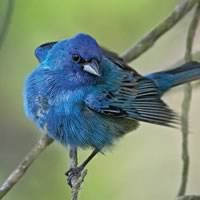
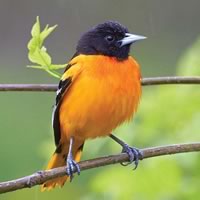
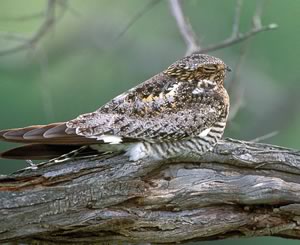
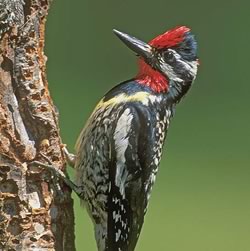

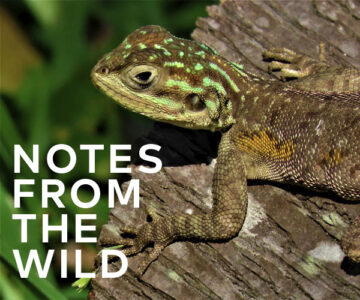
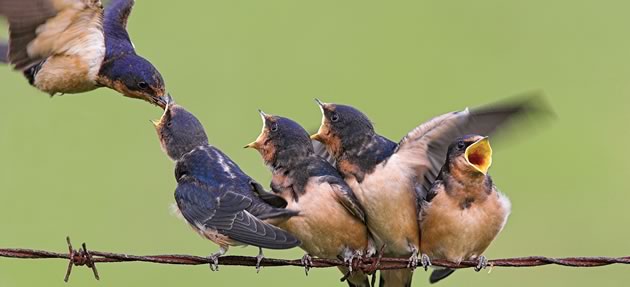


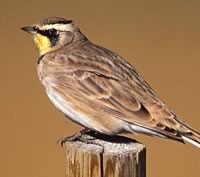

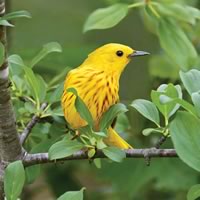

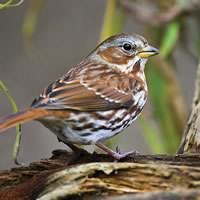
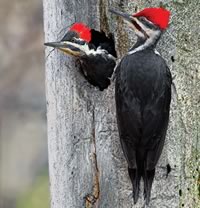
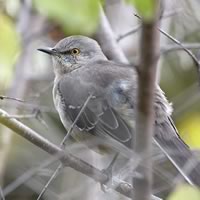




Can anyone tell me why the bird houses have been put up along Hwy 10 between Primrose and Orangeville?
Leslie on Mar 31, 2017 at 6:47 pm |
Fantastic Article! Really enjoyed it. I’ll copy the link to my website.
All the best,
Alex Sher
The Shelburne Freelancer,
Shelburne’s Online Newspaper Since 2015
http://www.shelburnefreelancer.com
[email protected]
Alex Sher from Shelburne, Ontario on Jun 8, 2016 at 4:56 pm |